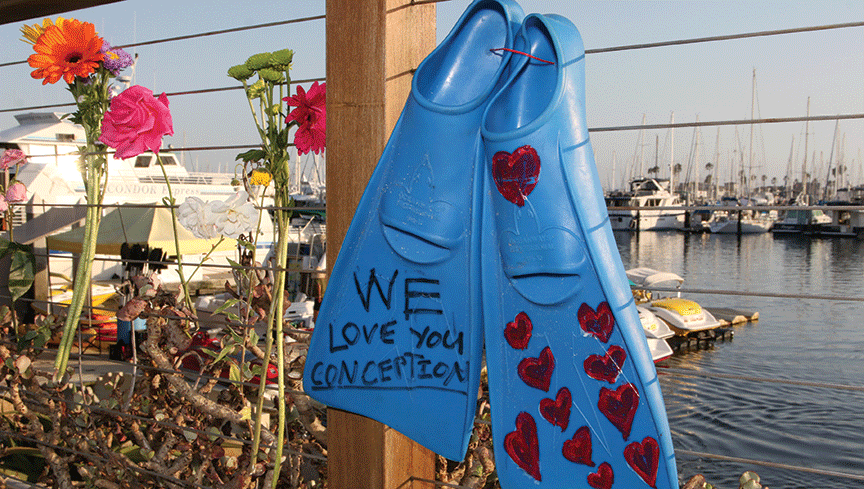Dubroff: Seeking justice and accountability in Santa Barbara dive boat fire
IN THIS ARTICLE
- Columns Topic
- Henry Dubroff Author
By Henry Dubroff Sunday, December 6th, 2020
Maritime law is a curious and illogical thing.
One obscure passage of the law may shield the owners of the dive boat Conception from civil liability in the deaths of 34 people who perished in a fire that broke out while the boat was anchored off of Santa Cruz Island in September But a criminal statute that dates back to before the Civil War may send the captain of the boat to prison for a very long time.

From the Editor
That criminal statute is how the Justice Department was able to charge Captain Jerry Boylan, 67, with 34 counts of what is called “seaman’s manslaughter,” with each count carrying a maximum penalty of 10 years in prison. The indictments, announced Dec. 1, also may be part of the first halting step toward recovery for an industry that has been shut down by the twin blows of deadly accident and pandemic.
A Loyola Law Review article from 2005, by William Wynne and Brian Ballay, traces the history of seaman’s manslaughter cases back to the late 1830s, when stiff penalties were first imposed on owners and operators of steamboats that were prone to deadly accidents and explosions. Over the years, civil liability rules have been changed to limit liability to, in effect, the value of the hull lost.
But seaman’s manslaughter has remained on the books and one case — the early 2000s prosecution of the captain of a barge whose actions caused the death of a passenger, his ex-wife — prompted the Loyola article, which argues for modernizing civil liability and reforming the criminal statute.
As Wynne and Ballay wrote for the law review, the criminal prosecution of a captain for manslaughter places a heavier burden on the prosecution than a negligence or wrongful death claim would in a civil case. Following their logic, the Conception case would give Boylan the opportunity to defend himself, protection against self-incrimination and the possibility of reaching a plea deal that may or may not involve implicating the boat’s owners.
However it turns out, the Conception case may finally lead to changes in maritime law that, at least to this observer, seem long overdue.
Another question is what the Conception tragedy and legal fallout mean for the dive boat industry, a small but important piece of on-the-water tourism on the Central Coast.
The industry shut down after the tragedy and has only recently received guidance from the Coast Guard about what sorts of changes will need to be made to vessels carrying groups of divers to popular spots like Santa Cruz Island.
It goes without saying that dive boat trips won’t resume until both pandemic exposure and safety issues are addressed, which could be months or even years.

Lurking in the background is the question of Coast Guard enforcement of the many rules that affect commercial boats in West Coast waters.
Press reports as well as testimony before the National Transportation Safety Board suggest that rules governing the posting of night watches, safety drills and the safe stowage of electronic gear are enforced spottily and that penalties are rarely imposed.
Will the public have confidence to return to dive boats if there is not a robust effort to enforce rules and pay attention to safety?
For large corporations, the ability to evade criminal liability has caused a world of problems. The two deadly crashes of Boeing’s 737 Max are the best examples of how the system is, to use a loaded word, rigged. But Boeing did pay a price in the market as its sales plunged, customers demanded givebacks, its stock price plummeted and civil penalties were imposed.
Finally, there is the question of technology. The cause of the Conception tragedy, according to the NTSB and the Justice Department complaint, was the failure to make sure that a watch was awake to spot the fire immediately and put it out or get everybody off the boat.
But the actual cause of the fire — perhaps faulty wiring, the explosion of a defective cell phone battery or an overloaded power strip that triggered a large, instantaneous fire — has not been determined. Until there is safe, effective storage for electronics onboard, there may be serious consequences for an industry whose future is in peril.
• Henry Dubroff is owner and editor of the Business Times. Contact him at [email protected].












